The delivery of high-quality patient care is increasingly becoming a team effort, and no one specialty can or should claim exclusive rights to patient populations or clinical disease states. In our daily practice, interventional radiologists routinely collaborate closely with colleagues in other specialties across the spectrum of medicine including cancer, vascular disease, neurological disease, women’s health and pediatrics to name but a few. These everyday working collaborations (whether in clinical, research or other settings) are translated into general health care policy improvements through alliances between the professional medical societies that represent the practitioners in these specialties.
Over the years, SIR has forged, led or joined a number of such alliances—from formal coalitions of diverse medical specialties, to collaborations with individual organizations for a specific need, to working groups with select organizations to draft clinical practice guidelines—to advocate jointly for common goals, to improve access to minimally invasive image-guided treatments, and to ensure that patients receive the best evidence-based care.
Now that we have transitioned to one of 37 primary medical specialties, a clear indication that the general medical community recognizes IR’s contribution to high-quality patient care, this kind of combined advocacy has become more important than ever. It demonstrates that while IR is still a relatively small specialty, by joining our voice with those across healthcare, we will address challenges in patient access to IR, reimbursement, research funding and more. We are equal partners in these alliances, ensuring that our expertise and privileges are recognized and respected.
Forging new or joining existing alliances provides SIR a seat at the table where decisions are made, policies are shaped, and healthcare landscapes are transformed. It facilitates our direct access to legislators, government and health care administrators, policy experts and patient advocates. Our participation in these groups also reflects our transition from the outdated paradigm of "better, faster, cheaper" to recognizing the importance of interventional radiology as a key component of the high-quality patient care team.
While we have joined numerous coalitions and other alliances over the years, it is crucial to strategically focus on disease states where we play a major role or have developed mature service lines and align these relationships with our overall societal strategic objectives.
Perhaps no alliance is more strategic than the group SIR has most recently joined: Earlier this month, SIR joined the American College of Surgeons Commission on Cancer, which brings together more than 50 multidisciplinary medical organizations to collaborate on standards, research, data collection, education and quality to enhance the survivability of cancer and improve the quality of life for cancer patients. Joining this commission gives IR a seat at the table on one of the most influential decision-making organizations in oncology.
Earlier this year, SIR joined the American Diabetes Association’s Amputation Prevention Alliance as a founding member. The mission of this alliance is focused on saving limbs and lives by advancing needed policy changes, driving clinician awareness to prevent amputations, and empowering patients to advocate for their best care. The alliance also aims to disrupt the curve of amputations and amputation-related mortality among low-income and minority individuals with diabetes. In July, SIR member Alok Bhatt, MD, participated in the Amputation Prevention Alliance’s “solutions summit,” as one of three physicians discussing the challenges leading to unnecessarily high rates of diabetes-related amputations.
These are just a few of the examples of SIR’s strategic collaborations. In the online version of this article, you will find a list of other such alliances that SIR has joined over the years, and some of the accomplishments we have achieved together, working on behalf of both our patients and our members. SIR recognizes the importance of multispecialty coalitions and other alliances and regularly invests time and resources to these efforts. By actively participating in these partnerships, we enhance our influence, raise awareness about our specialty, foster collaboration and improve patient care. As we continue to navigate the ever-evolving landscape of medicine, our strategic alliances remain a fundamental aspect of our mission to advance interventional radiology, demonstrate the value of IR and provide the best possible care to our patients.
Sidebar: SIR alliances
Below represents a select list of the coalitions and other alliances that SIR has joined in recent years, as well as their area of focus and/or key accomplishment(s). Watch for more ways SIR works with these organizations at the SIR Action Center or by reading the monthly IR Advocacy Update.
- Accreditation Council for Graduate Medical Education (ACGME): Advocating for state recognition of IR.
- Advanced Medical Technology Association (AdvaMed): Worked on ethylene oxide sterilization matter and collaborated on resolution to protect medical reps in surgical suite.
- American Academy of Ophthalmology (AAO): Collaborated on advocacy regarding Medicare payment cuts. Co-host PAC fundraisers for Senator Debbie Stabenow and Representative Vern Buchanan. Registry advocacy via Physician Clinical Registry Coalition (PCRC).
- American Association of Neurological Surgeons (AANS): Collaborated to oppose Medicare pay cuts to MDs; clinical registry issues. Supported AANS PAC event to support John Gowan, MD.
- American College of Cardiology: ethylene oxide letter.
- American College of Radiology (ACR): Collaborating on legislative and regulatory advocacy initiatives regarding Medicare payment cuts.
- ACR-led E/M Coalition: Coalition composed of 90 health groups formed to lobby Congress, HHS and the White House for relief from CMS-proposed Medicare payment reductions contained in the FY2021 Medicare Physician Fee Schedule. The coalition succeeded in bringing a proposed 8% pay cut for IR down to a 2% pay cut.
- American College of Surgeons (ACS): Collaborated on legislative and regulatory advocacy initiative regarding Medicare payment cuts, worked on MD payment letter.
- ACS Commission on Cancer (COC): Brings together more than 50 multidisciplinary medical organizations to collaborate on standards, research, data collection, education and quality to enhance the survivability of cancer and improve the quality of life for cancer patients. Joining this commission gives IR a seat at the table on one of the most influential decision-making organizations in oncology.
- American Diabetes Association’s Amputation Prevention Alliance: Focused on saving limbs and lives by advancing needed policy changes, driving clinician awareness to prevent amputations, and empowering patients to advocate for their best care. The alliance also aims to disrupt the curve of amputations and amputation-related mortality among low-income and minority individuals with diabetes.
- American Medical Association (AMA): Collaborating on numerous legislative and regulatory issues. Support SIR AMA delegates.
- AMA Advocacy Conference: Review of telehealth trends.
- AMA Black Maternal Health Caucus: Educated on IR role in treatment of uterine fibroids.
- Association of American Medical Colleges (AAMC): Collaborating on implementing new rule creating 1,000 new GME training slots.
- Association of Black Cardiologists (ABC): Co-hosted PAC event for Representative Donald Payne (D-NJ) Chair of Congressional PAD Caucus.
- Association of Perioperative Registered Nurses (AORN): Worked on return to surgical suites safely letter/COVID safety matters, collaborated on resolution to protect medical reps in surgical suite.
- Cardiovascular Coalition (CVC): Seeks community-based solutions designed to improve awareness and prevention of PAD; to reduce geographic disparities to PAD care and secure patient access to high quality, cost-effective interventional treatment for PAD.
- Clinical Labor Coalition (CLC): Group hosted by SVS to promote clinical labor wage relief.
- Health Innovation Alliance (HIA): Arranged speaking opportunity for Katharine L. Krol, MD, FSIR, along with FEC Commissioner on telehealth advocacy.
- Health Innovation Alliance: Telehealth advocacy discussions.
- Joint Commission: Collaborated on accreditation and quality measures.
- Liberty Partners Group: Collaborate on numerous advocacy initiatives related to Medicare pay cuts. Host PAC events together with various clients of firm, to include Radiology Partners (RADPartners), CVC, SCAI, etc.
- MEDPAC: Very active group of 90 medical societies with PACs, schedule and attend numerous meetings with members of Congress.
- Medical Imaging & Data Resource Center: Townhall meeting, federal funding for research.
- Men’s Health Network: Collaborated on IR treatment for prostate issues.
- National Coalition for Women with Heart Disease (Womenheart): Collaborated on PAD issues.
- Physician Clinical Research Coalition (PCRC): A coalition of 25 medical society-sponsored physician-led or physician centric registries dedicated to improving quality of care through the collection, analysis and sharing of information on clinical data outcomes. Advocacy on clinical registry legislative and regulatory issues.
- Preventative Cardiovascular Nurses Association (PCNA): Collaborated on PAD issues.
- Society of Vascular Surgery: Co-founded the Clinical Labor Coalition to fight Medicare pay cuts.
- Society of Cardiovascular Angioplasty and Intervention (SCAI): Collaborated on PAD issues.
- Society of Women’s Health Research (SWHR): Very active since July 2021 on numerous ongoing women’s health projects.
- Women Heart National Coalition: PAD advocacy.
- World Medical Association: Myanmar advocacy.




